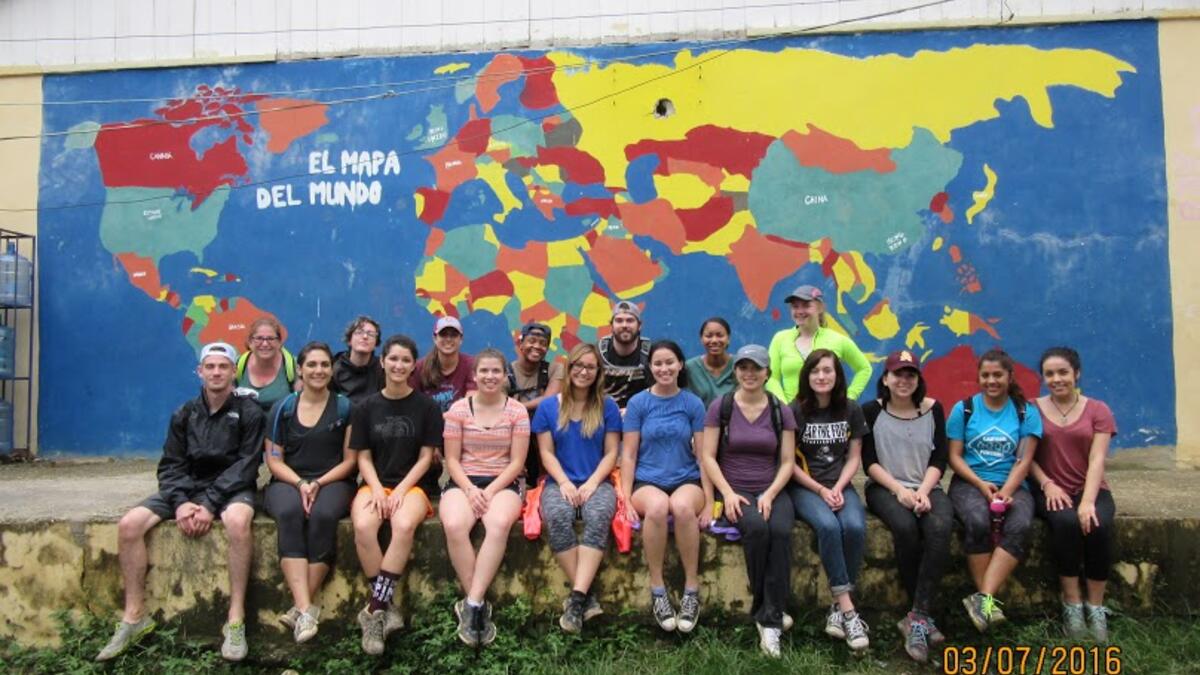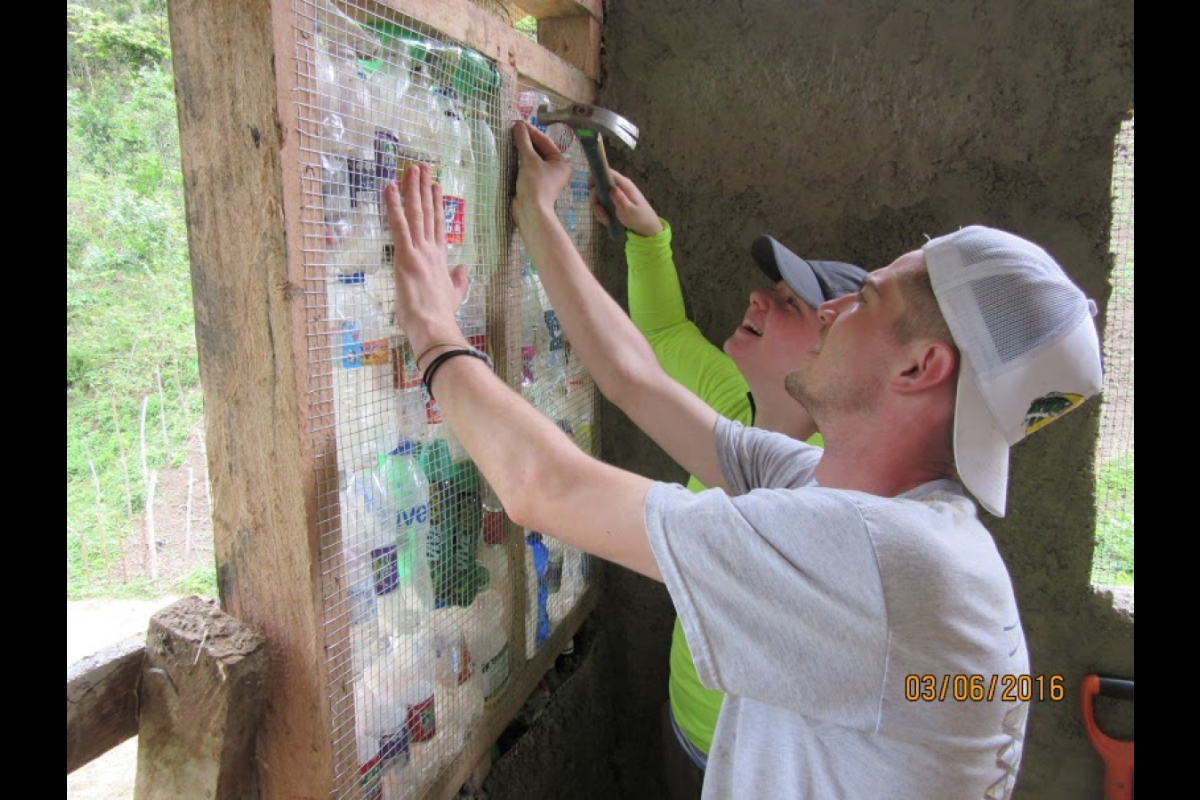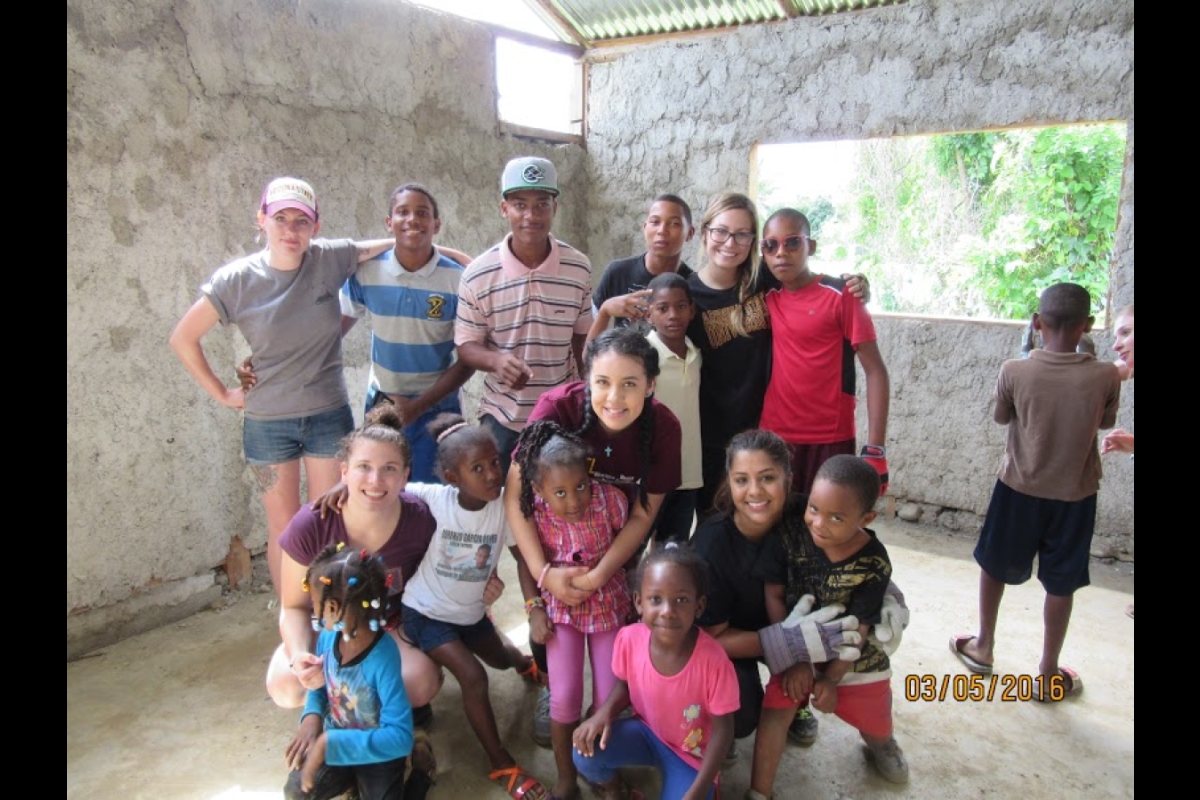Taste of Peace Corps experience brings perspective

Seventeen ASU students seized the opportunity to spend their spring break exploring what Peace Corps work might be like, participating in the inaugural "Taste of Peace Corps in the Dominican Republic" global intensive experience. From left, front row: Jack O'Brien, Samantha Spadaro, Brianna Celaya, Mary Flora, Elissa Latta, Meghan Scollard, Lesile Amaya, Gabrielle Blanchette, Rachel Prickett, Mary Casas, Silvia Acuna. Second row: faculty director for the trip Jessica Hirshorn, Kristin Jones, Morgan Plowman, Phylicia Grant, Chad James, Seannah Franklin, Clariece Marlowe Bayne.
For ASU senior Jack O’Brien, the words of baseball great Jackie Robinson have always been a guiding principle: “A life is not important except in the impact it has on other lives.”
The quote by his favorite player, O’Brien said, also perfectly describes his feelings about his recent mid-semester ASU study abroad trip to the Dominican Republic.
“After returning to the States from spending a week in the Dominican Republic, the biggest thing I walked away with is perspective,” O’Brien said. “Witnessing extreme poverty, incalculable amounts of trash and waste, a serious lack of fresh water, and low standard of living made me realize what is important in humanity. Despite the harsh living environment, the people in the DR (Domincan Republic) were the most genuine, caring, passionate, helpful and overall loving people. Their sense of community involvement and ‘take the shirt off your back and give it to someone who needs it’ type of attitude changed my perspective on life.”
O’Brien is one of 17 ASU students who participated in the “Taste of Peace Corps in the Dominican Republic” global intensive experience over spring break. Organized by the College of Letters and Sciences and ASU Career Services, the program was facilitated by Discover Corps, an affiliate of the National Peace Corps Association.
Students visited active or recent Peace Corps volunteer sites, including a chocolate factory run by a women's cooperative where a business volunteer is currently serving, a site where a past volunteer implemented a stove project, and a site where a past volunteer helped build an aqueduct. Additionally, they lent their muscle to help build a school and a home — using plastic bottle-construction — and a vertical garden.
A few leisure activities were also built into the itinerary: a visit to an ecological park, a mangrove, and snorkeling.
“The program was an excellent way for students to experience what it would be like to serve as a Peace Corps volunteer, prior to making a two-year commitment,” said College of Letters and Sciences senior lecturer Jessica Hirshorn, faculty director for the trip and a former Peace Corps volunteer in the Federated States of Micronesia. “In the end this experience was a success, solidifying for some students that they wanted to join the Peace Corps and for others that the Peace Corps may not be for them.”
At ASU, Hirshorn has served as a past faculty director for the College of Letters and Sciences’ London and Dublin summer internship programs and, in addition to leading this inaugural Dominican Republic spring break experience, is the faculty director of ASU's new summer internship program in Beijing.
Samantha Spadaro, who graduates in May with interdisciplinary studies concentrations in sociology and communication, chose the Dominican Republic opportunity to complete her internship credits.
“I chose this program because I knew that my time and energy would be valued by the people I was helping and that it was a bone fide program,” said Spadaro.
An unexpected consequence of the trip was the enormous sense of community she experienced.
“I’m incredibly happy that ASU offered this program! I found it very interesting how humble and grateful the people that we helped were. Their warmness was to be unmatched by any experience I have had working with many non-profits in the States,” she observed. “As Americans we often find ourselves out of touch with what it truly means to have a sense of community, and that was one of my favorite parts of this trip. Not only did we get to be a part of the Dominican communities but also created our own.”
O’Brien will also graduate in May with interdisciplinary studies concentrations in business and communications and a history minor. He is taking a job with a St. Louis-based contracting company Altman Charter. “But I’ll probably be living in San Antonio, Texas, working as a project engineer managing a commercial-grade construction project,” he explained.
He recommends that all students aim for an experience that lets them look at life in the United States from a fresh perspective.
“As Americans we often fabricate and create our problems. We often hate instead of love,” O’Brien reflected. “I would encourage future students to invest some time in traveling to a developing country as I think it would bring about a life-changing experience to all.”
More Local, national and global affairs

First-ever Taiwan Symposium at Thunderbird celebrates business, cultural connections
The investment by TSMC and other Taiwanese corporations in Arizona will reap dividends not only in thousands of new jobs but also…

Study shows that trust drives successful market economies — but not in the way you may think
From fueling our cars to fulfilling daily coffee habits, the average U.S. cardholder makes 251 credit card transactions per year…

Higher education key to US competitiveness, security
ASU President Michael Crow’s notion of universities as public service institutions — places that serve society in practical and…




